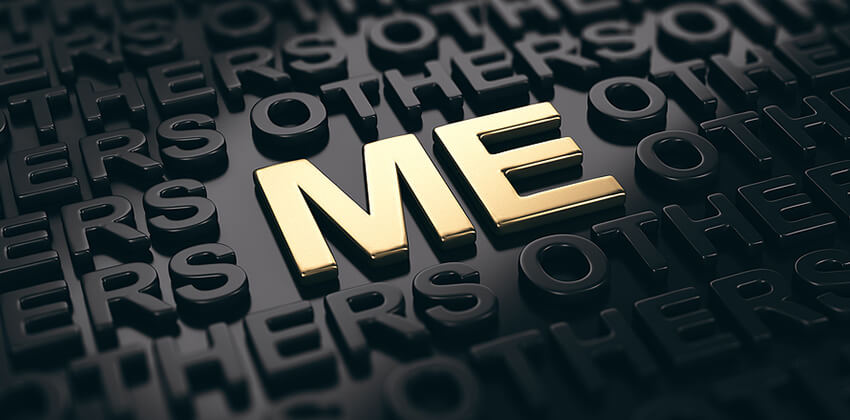
Your personal brand is more than the brand statement you use as your elevator pitch or to market yourself in your paper, digital, and online career marketing communications.
Your personal brand is the combination of personal attributes, values, drivers, strengths, and passions you draw from that differentiates your unique promise of value from your peers.
Your personal brand is your reputation — the perception of you held by the external world. That brand helps those assessing you determine if they should hire you or do business with you.
Advertisement
You need to identify those qualities and characteristics within you. Then, communicate that brand with a crystal clear, consistent message across multiple channels — online and offline — designed to resonate with your target audience.
I’d like to take you deeper into defining your brand than I did in my earlier Job-Hunt article, Creating Your Authentic Personal Brand Statement.
How to Brand Yourself: 10 Steps
I developed the following 10 brand assessment and defining exercises based on my training as a Reach Certified Personal Branding Strategist, which I use to guide my clients through executive brand development.
Be prepared to devote time to this analysis and thought. In the end, I think you’ll find your efforts eye-opening and invigorating.
1. What are your vision and purpose?
Look externally at the bigger picture of your vision for the world, and then internally at how you might help the world realize your vision.
Think about one world problem you would like to see solved or one area of life that you want to see transformed or improved. This is your vision.
What role might you play in making your vision happen? This is your purpose.
2. What are your values?
Your values are your guiding principles – things like:
Balance, being the best, agility, calmness, challenge, decisiveness, perseverance, drive, honesty, integrity, pragmatism, sensitivity, structure, teamwork, sharing, vitality, zeal.
3. What are your passions?
What do you most enjoy doing – in your personal life and work life? Think about the activities, interests, or conversational topics that fascinate and energize you. Your passions make you get out of bed at 6 a.m. on a Saturday morning or get you talking enthusiastically with others. How do your passions converge with what you are best at doing?
4. What are your top goals for the next year, 2 years, and 5 years?
Work on projecting what you intend to accomplish so you can put together a strategic action plan to get there.
5. What are your top brand attributes.
What 3 or 4 adjectives best describe the value you offer? What words do you use to define your personality? Once you pinpoint what you feel are the right kinds of words, it’s a good idea to consult a thesaurus to precisely nail the exact words. Here are some possibilities, but don’t limit yourself to these:
Collaborative
Resilient
Forward-focused
Risk-taking
Connected
International
Visionary
Diplomatic
Intuitive
Precise
Enterprising
Ethical
Genuine
Accessible
For more ideas, check out the list of over 100 strengths in Finding Your Greatest Strengths.
6. What are your core strengths or motivated skills?
In what functions and responsibilities do you excel? For what things are you the designated “go-to” person? What gap would your company be faced with if you left suddenly? The possibilities are endless, but here are a few suggestions:
Analyzing
Collaborating
Leading
Delegating
Empowering others
Forecasting
Crunching numbers
Anticipating risk
Mentoring
Visioning
Selling
Innovating
Managing conflict
Defining needs
Writing
Listening
Communicating
7. Get feedback from those who know you best – at work, at home, anywhere.
The true measure of your brand is the reputation others hold of you in their hearts and minds. Notice how they introduce you to others. Ask them what your top brand attributes and core strengths are. How does your self-assessment jibe with their feedback?
The 360° Reach Personal Brand Assessment, a confidential, web-based tool that collects anonymous 360-degree feedback in real time from your choice of respondents, is a good option to accomplish this step and the basic account is free.
8. Do a SWOT analysis (Strengths, Weaknesses, Opportunities, Threats).
Strengths and weaknesses are internal, and speak to your potential value to an employer. Opportunities and threats are external, and help you foresee what you’re facing in next career steps.
SWOT is an invaluable personal branding exercise that also helps prepare you for interviewing and future career growth and stability.
[More on SWOT analysis for your career.]
9. Who is your target audience?
Determine where you want to fit in (kind of job position and industry). Learn what decision makers in that field are looking for when they’re assessing candidates. Create your personal brand messaging around what keywords and content will attract them. Find out where those decision makers hang out, position yourself in front of them, and capture their attention.
10. Who is your competition in the marketplace and what differentiates you from them?
What do the people competing for the same jobs as you typically have to offer? What is it about you that makes you the best hiring choice? What added value do you bring to the table that no one else does?
Bottom Line on Personal Branding
The work involved in uncovering and defining your personal brand may seem daunting, but your efforts will benefit you immeasurably. In job search, defining and communicating your personal brand can help pre-qualify you as a good fit and strategically position you to land your next great gig faster.
More About Your Personal Brand
- How to Create Your Personal Brand Statement
- Get Personal with Your Personal Branding Statement
- Guide to Personal Branding with LinkedIn
- The Absolute Best Practices for Building Your Personal Brand with LinkedIn
- Fast, Smart Personal Branding Hacks
- Branding Hype and Myth vs. Reality
 About the author…
About the author…
Meg Guiseppi, Job-Hunt’s Personal Branding Expert and 20+ year careers industry veteran, has earned 10 certifications, including Reach Certified Personal Branding Strategist, Reach Social Branding Analyst – LinkedIn Profile Strategist, and Certified Executive Resume Master. Meg is the author of “23 Ways You Sabotage Your Executive Job Search and How Your Brand Will Help You Land.” Connect with Meg at ExecutiveCareerBrand.com for c-suite personal branding and executive job search help and on Twitter (@MegGuiseppi). And, you may also download Meg’s free ebook – Job-Hunt Guide to Smart Personal Branding with LinkedIn.
More about this author…
Don't forget to share this article with friends!




